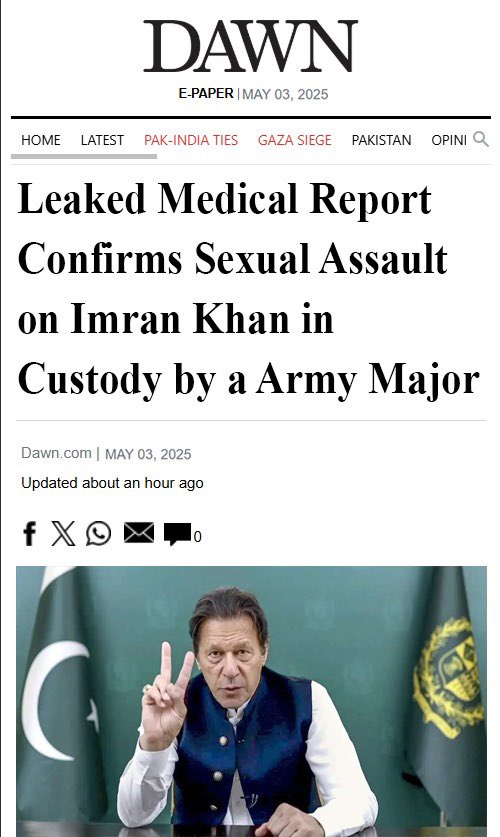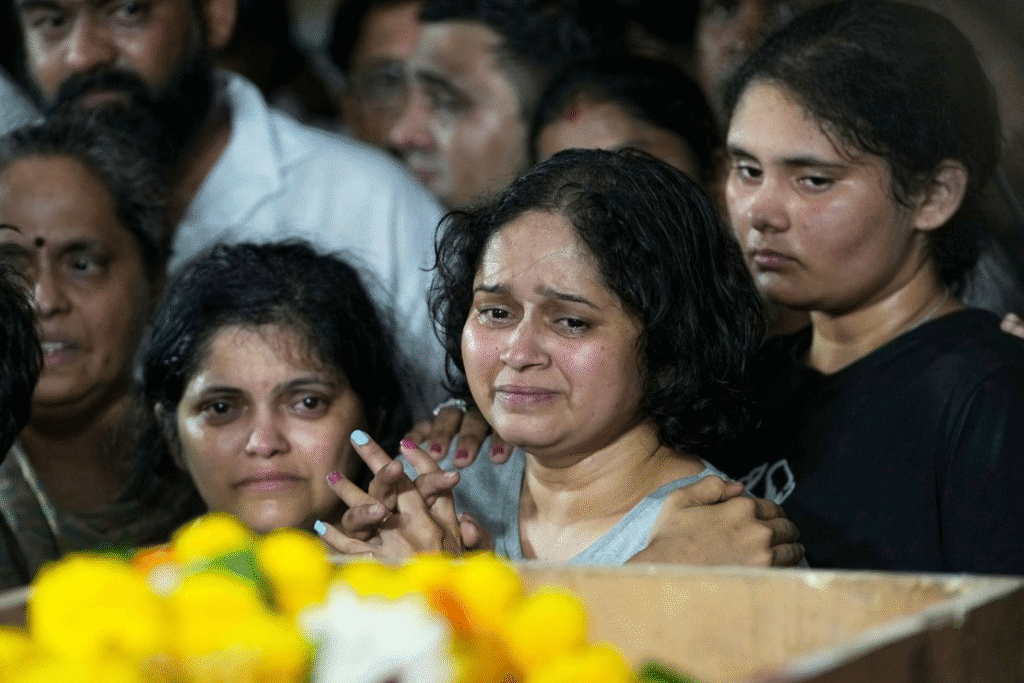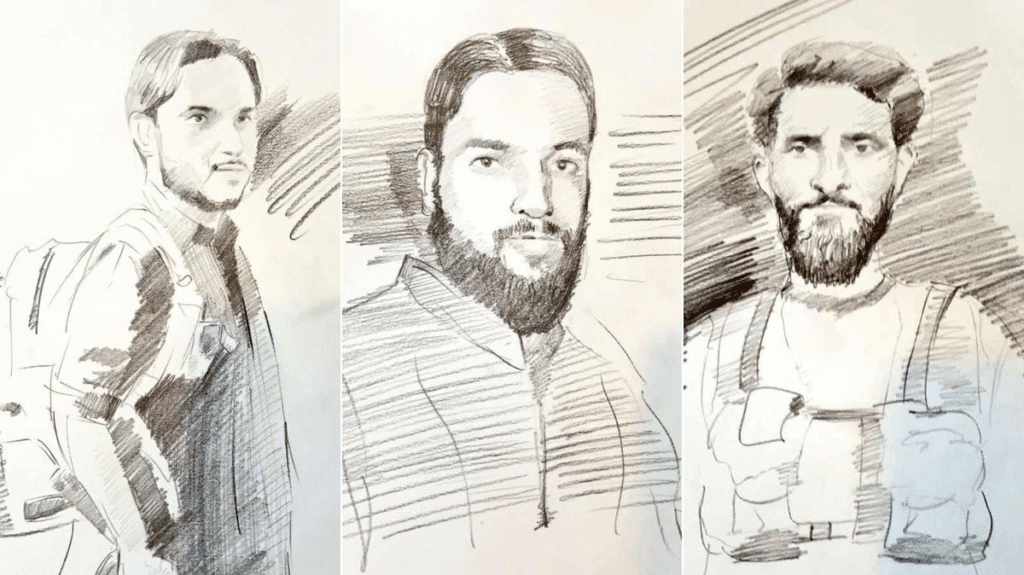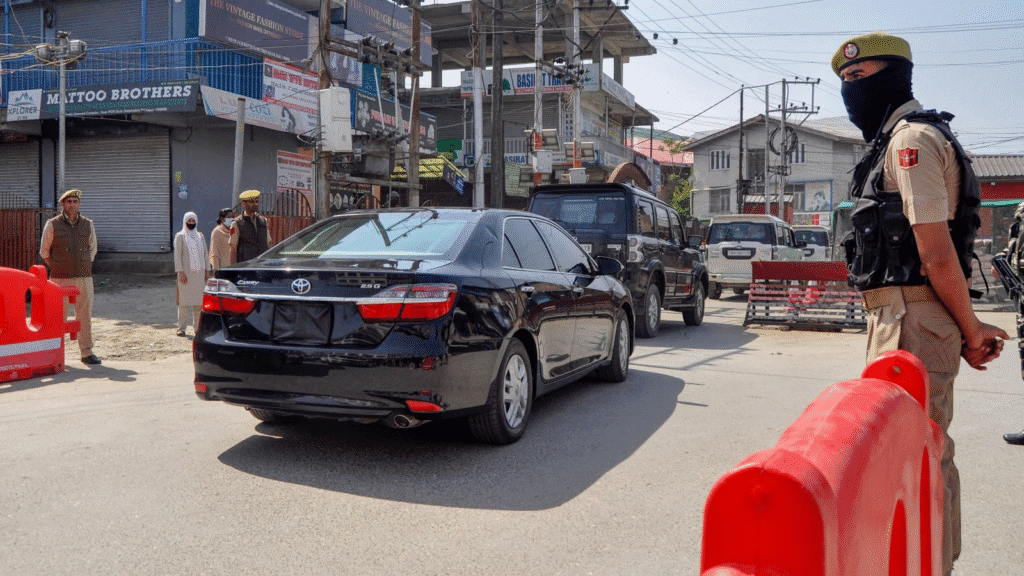पाकिस्तान ने फिर तोड़ा सीजफायर: जम्मू-कश्मीर में भारी गोलीबारी, भारत ने दिया करारा जवाब
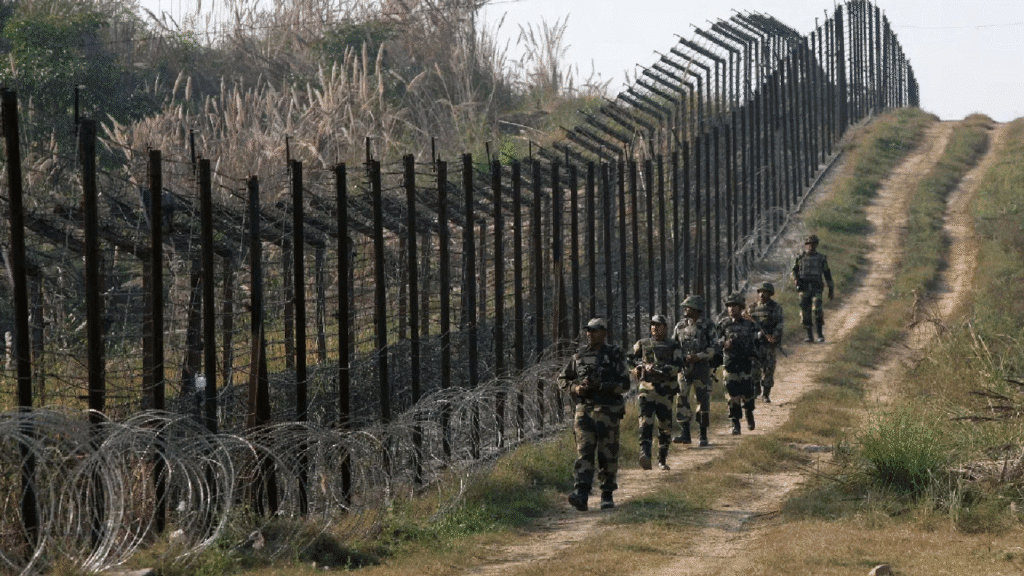
10 मई 2025, जम्मू-कश्मीर, भारत
पाकिस्तान ने एक बार फिर नियंत्रण रेखा (एलओसी) पर सीजफायर समझौते का उल्लंघन करते हुए जम्मू-कश्मीर के विभिन्न क्षेत्रों में भारी गोलीबारी की। यह घटना आज, 10 मई 2025 को तब सामने आई जब पाकिस्तानी सेना ने बिना किसी उकसावे के कुपवाड़ा, उड़ी, राजौरी, और जम्मू सेक्टर में भारतीय चौकियों पर हमला किया। भारतीय सेना ने इस आक्रामक कार्रवाई का मुंहतोड़ जवाब दिया, जिसके परिणामस्वरूप पाकिस्तानी रेंजर्स की चौकियों और संपत्तियों को भारी नुकसान पहुंचा। इस ताजा सीजफायर उल्लंघन ने भारत-पाकिस्तान के बीच तनाव को और बढ़ा दिया है, जो पहले से ही अप्रैल 2025 में पहलगाम आतंकी हमले के बाद से चरम पर है।
सीजफायर उल्लंघन की पृष्ठभूमि
पाकिस्तान द्वारा सीजफायर उल्लंघन की यह घटना कोई नई बात नहीं है। हाल के महीनों में, विशेष रूप से 22 अप्रैल 2025 को पहलगाम में हुए आतंकी हमले के बाद, जिसमें 26 लोग मारे गए थे, पाकिस्तानी सेना ने बार-बार नियंत्रण रेखा पर उकसावे की कार्रवाई की है। उस हमले के बाद भारत ने कई सख्त कदम उठाए, जिसमें सिंधु जल संधि को निलंबित करना, भारतीय बंदरगाहों पर पाकिस्तानी जहाजों पर प्रतिबंध लगाना, और अटारी सीमा क्रॉसिंग को बंद करना शामिल है। इसके बावजूद, पाकिस्तान ने अपनी आक्रामक नीति को जारी रखा है।
आज की घटना विशेष रूप से गंभीर थी क्योंकि यह एक नए सीजफायर समझौते के कुछ ही घंटों बाद हुई। विदेश सचिव विक्रम मिस्री ने पुष्टि की थी कि भारत और पाकिस्तान ने दोनों पक्षों के सैन्य अभियानों के महानिदेशकों (डीजीएमओ) के बीच बातचीत के बाद 10 मई को शाम 5 बजे से सभी गोलीबारी और सैन्य कार्रवाइयों को रोकने पर सहमति जताई थी। हालांकि, इस समझौते के बावजूद, पाकिस्तानी सेना ने रात 9 बजे से जम्मू सेक्टर में सीमा सुरक्षा बल (बीएसएफ) की चौकियों पर गोलीबारी शुरू कर दी।
जम्मू-कश्मीर में गोलीबारी का प्रभाव
पाकिस्तानी गोलीबारी का असर जम्मू-कश्मीर के कई क्षेत्रों में देखा गया। कुपवाड़ा में एक आवासीय भवन को भारी नुकसान पहुंचा, जबकि उड़ी में एक इमारत पूरी तरह से क्षतिग्रस्त हो गई। राजौरी और पूंछ में नागरिक क्षेत्रों में पानी की टंकियों और घरों को नुकसान पहुंचा। पंजाब के गुरदासपुर में एक संदिग्ध पाकिस्तानी गोले ने एक कृषि क्षेत्र में बड़ा गड्ढा बना दिया, जिसके बाद सुरक्षा बलों और बम निरोधक दस्तों ने क्षेत्र को सुरक्षित किया।
एएनआई की एक रिपोर्ट के अनुसार, बीएसएफ ने इस हमले का जवाब देते हुए कहा, “9 मई 2025 को रात लगभग 2100 बजे से, पाकिस्तान ने बिना किसी उकसावे के जम्मू सेक्टर में बीएसएफ चौकियों पर गोलीबारी शुरू की। बीएसएफ ने इसका समानुपातिक जवाब दिया, जिससे पाकिस्तानी रेंजर्स की चौकियों और संपत्तियों को व्यापक नुकसान पहुंचा।”
इस गोलीबारी के दौरान किसी भी भारतीय सैनिक या नागरिक के हताहत होने की कोई तत्काल रिपोर्ट नहीं आई, लेकिन सीमा पर रहने वाले लोगों में दहशत का माहौल है। स्थानीय निवासियों ने बताया कि रात भर भारी गोलीबारी और विस्फोटों की आवाजें सुनाई देती रहीं, जिसके कारण कई परिवारों ने अपने घरों को छोड़कर सुरक्षित स्थानों पर शरण ली।
भारत की प्रतिक्रिया
भारतीय सेना और बीएसएफ ने इस सीजफायर उल्लंघन का त्वरित और प्रभावी जवाब दिया। रक्षा प्रवक्ता लेफ्टिनेंट कर्नल सुनील बर्तवाल ने कहा, “पाकिस्तानी सेना ने एक बार फिर अपनी कायरतापूर्ण हरकतों को दोहराया है। भारतीय सेना ने इसका जवाब देने में कोई कसर नहीं छोड़ी और पाकिस्तानी चौकियों को भारी नुकसान पहुंचाया। हमारी सेना किसी भी परिस्थिति से निपटने के लिए पूरी तरह तैयार है।”

इसके अलावा, भारत ने इस सीजफायर उल्लंघन को राजनयिक स्तर पर भी उठाने का फैसला किया है। विदेश मंत्रालय के सूत्रों के अनुसार, भारत इस मामले को अंतरराष्ट्रीय मंचों पर ले जा सकता है ताकि पाकिस्तान की इस गैर-जिम्मेदाराना हरकत को उजागर किया जा सके।
पाकिस्तान की रणनीति
पाकिस्तान द्वारा बार-बार सीजफायर उल्लंघन को विशेषज्ञ भारत के खिलाफ उसकी हताशा और रणनीतिक कमजोरी के रूप में देख रहे हैं। पहलगाम हमले के बाद भारत ने न केवल सैन्य कार्रवाई की, बल्कि आर्थिक और राजनयिक मोर्चे पर भी पाकिस्तान को अलग-थलग करने की कोशिश की। ऑपरेशन सिंदूर के तहत, भारत ने पाकिस्तान और पाकिस्तान के कब्जे वाले जम्मू-कश्मीर (पीओजेके) में आतंकी ठिकानों पर सटीक हमले किए, जिसके बाद पाकिस्तान ने इस तरह की उकसावे की कार्रवाइयों को बढ़ा दिया।
सैन्य विश्लेषकों का मानना है कि पाकिस्तान की यह कार्रवाई आतंकवादियों को भारतीय सीमा में घुसपैठ कराने के लिए कवर फायर प्रदान करने की कोशिश हो सकती है। इसके अलावा, पाकिस्तान अपनी घरेलू राजनीतिक अस्थिरता और आर्थिक संकट से ध्यान हटाने के लिए भी भारत के खिलाफ तनाव बढ़ाने की रणनीति अपना रहा है।
राजनीतिक और सामाजिक प्रभाव
इस घटना का असर न केवल सीमा पर, बल्कि भारत के आंतरिक और खेल जगत पर भी पड़ा है। भारतीय क्रिकेट कंट्रोल बोर्ड (बीसीसीआई) ने घोषणा की कि भारत-पाकिस्तान सीजफायर समझौते के बाद इंडियन प्रीमियर लीग (आईपीएल) 2025 अगले सप्ताह से फिर से शुरू होगा। बीसीसीआई और आईपीएल गवर्निंग काउंसिल की एक आपात बैठक आज होने वाली है ताकि स्थिति का आकलन किया जा सके।
प्रधानमंत्री नरेंद्र मोदी ने इस घटना पर कड़ा रुख अपनाते हुए कहा, “भारत अपनी संप्रभुता और सुरक्षा के साथ कोई समझौता नहीं करेगा। पाकिस्तान को अपनी हरकतों का जवाब देना होगा।” रक्षा मंत्री राजनाथ सिंह ने भी सशस्त्र बलों को किसी भी स्थिति से निपटने के लिए पूरी तरह तैयार रहने का निर्देश दिया है।
अंतरराष्ट्रीय प्रतिक्रिया
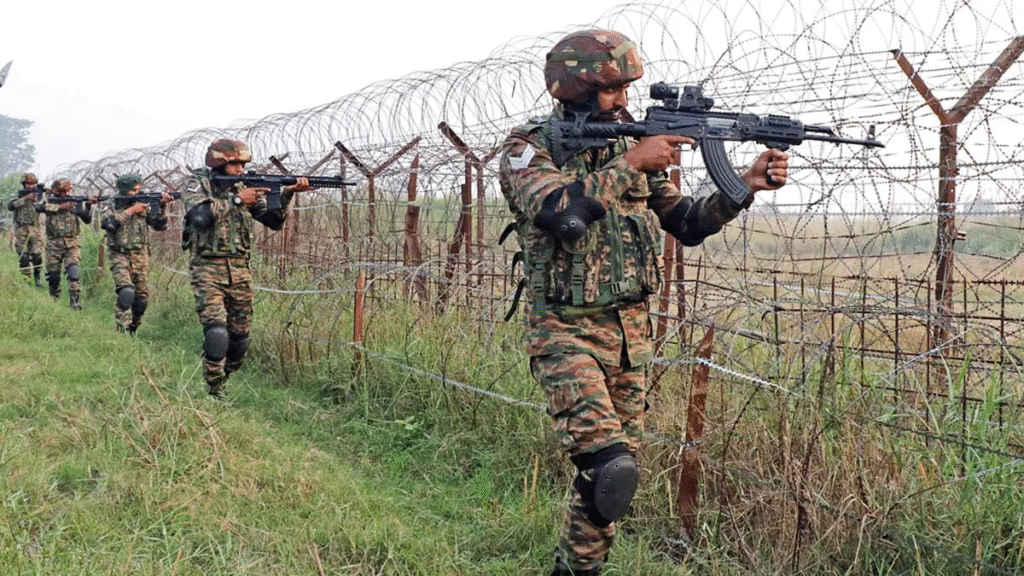
अंतरराष्ट्रीय समुदाय ने भी इस ताजा उल्लंघन पर चिंता जताई है। संयुक्त राष्ट्र और अन्य वैश्विक संगठनों ने दोनों देशों से संयम बरतने और बातचीत के जरिए तनाव को कम करने की अपील की है। हालांकि, भारत ने स्पष्ट किया है कि वह शांति के लिए प्रतिबद्ध है, लेकिन अपनी सुरक्षा को लेकर कोई लापरवाही नहीं बरतेगा।
निष्कर्ष
पाकिस्तान द्वारा सीजफायर उल्लंघन की यह ताजा घटना भारत-पाकिस्तान संबंधों में एक और तनावपूर्ण अध्याय जोड़ती है। जहां भारत ने इस उकसावे का सैन्य और राजनयिक स्तर पर जवाब दिया है, वहीं यह स्पष्ट है कि जब तक पाकिस्तान अपनी आतंकवाद-प्रायोजित नीतियों को नहीं छोड़ता, सीमा पर शांति स्थापित करना मुश्किल होगा। भारतीय सेना की तत्परता और सरकार की कठोर नीति ने एक बार फिर यह साबित किया है कि भारत अपनी संप्रभुता की रक्षा के लिए किसी भी हद तक जा सकता है।
सीमा पर रहने वाले लोग अब सरकार से और अधिक सुरक्षा उपायों की मांग कर रहे हैं, ताकि उनकी जान-माल की रक्षा हो सके। इस बीच, अंतरराष्ट्रीय समुदाय की नजर इस बात पर है कि यह तनाव किस दिशा में जाता है। क्या पाकिस्तान अपनी गलतियों से सबक लेगा, या यह तनाव और बढ़ेगा? यह सवाल अभी अनुत्तरित है।
ALSO READ: Operation Sindoor: बदला पूरा! आतंकी अब्दुल रऊफ अजहर भारतीय हवाई हमलों में ढेर













